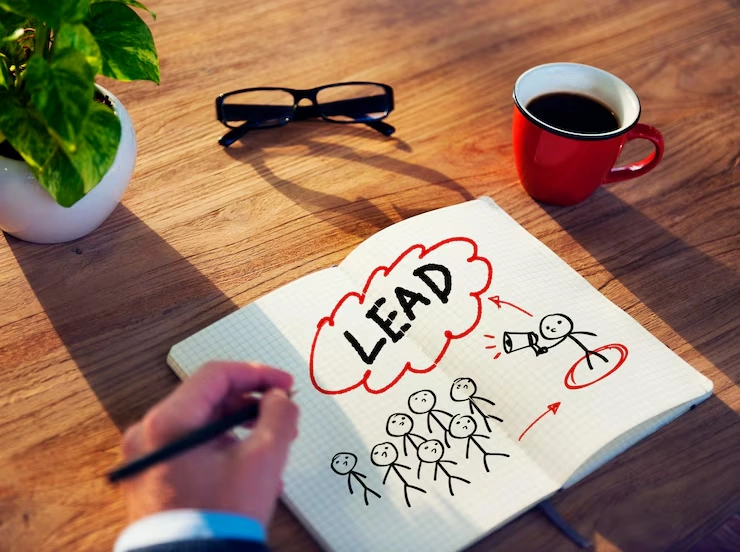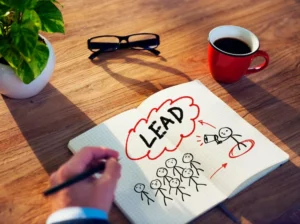Three months ago, we partnered with a B2B SaaS firm that had everything going for it—talented SDRs, strong marketing automation, and a clear ICP. But despite it all, they were missing the most critical ingredient: qualified leads.
It’s a familiar pain point. For many B2B businesses, lead generation becomes a game of extremes—either relying too much on content without enough traction, or hammering cold lists without conversions. What most don’t realize is this: Inbound and outbound lead generation aren’t rivals—they’re allies.
At Pearl Lemon Leads USA, we specialize in engineering hybrid B2B lead generation strategies that balance the long game with short-term pipeline needs. In this post, you’ll learn the real, data-backed differences between inbound and outbound, how to select the right mix, and how to finally build a lead generation strategy that delivers sales qualified leads (SQLs)—not just traffic.
Schedule a consultation now and let us break down what’s blocking your funnel.
What Is Inbound Lead Generation? (And Why It’s Not Just Blogging Anymore)
Inbound marketing is often misunderstood as simply “publishing content” and waiting for results. In reality, inbound lead generation is a detailed, pull-based strategy that relies on attracting the right buyers at the right time with value-driven, intent-matching touchpoints.
Let’s break it down.
Definition and Key Concepts
Inbound lead generation refers to the process of creating value-first touchpoints, like blog content, webinars, and downloadable resources, that draw potential customers toward your brand organically. These leads are often marketing qualified leads (MQLs), meaning they’ve interacted with your brand and shown interest, but aren’t yet ready to buy.
The strength of inbound lies in timing. When someone finds your content while actively researching a solution, their buyer intent is naturally higher.
Core Inbound Channels
To maximize results from inbound, businesses should apply multiple acquisition channels:
- SEO-focused content marketing (targeting high-intent keywords)
- Gated assets like whitepapers, checklists, and toolkits
- Webinars, case studies, and customer stories for authority-building
- Email lead-nurturing workflows that guide MQLs down the sales funnel.
- LinkedIn organic strategy using strategic content and audience engagement
Inbound is effective when all these elements work together as a system, not standalone efforts.
Benefits of Inbound
Here’s why inbound lead generation remains a foundational tactic in modern marketing:
- Sustainable Growth: Evergreen content compounds value over time.
- Stronger Trust: Inbound builds credibility before a sales touchpoint even occurs.
- Higher Conversion Potential: Leads coming through inbound often have better context and intent.
- Automatable: Once set up, many inbound workflows can be managed with minimal manual effort.
Limitations of Inbound
That said, inbound has its challenges:
- It’s a long-term play. You won’t see qualified leads overnight.
- Requires a strong grasp of content strategy, SEO, and CRO.
- Attribution is difficult, especially in multi-touch journeys across channels.
Did you know? According to HubSpot, only 18% of marketers feel confident in their inbound attribution models, leading to misinformed investment decisions (source).
Book a consultation to learn how to build a high-converting inbound funnel with measurable ROI.
What Is Outbound Lead Generation? (Yes, Cold Outreach Still Works—If Done Right)
If inbound is about waiting to be found, outbound lead generation is about creating opportunities proactively. With outbound, you’re reaching out directly to potential leads —before they engage with your brand.
When done right, it allows you to target high-value accounts with precision and speed.
Definition and Overview
Outbound lead generation involves initiating contact with prospects through cold outreach, calls, DMs, or ads, usually targeting decision-makers at companies matching your ICP. These prospects haven’t yet expressed interest in your product or service.
The goal? Move them through the funnel quickly by delivering high-value, personalized messages that address their immediate pain points.
Common Outbound Channels
Effective outbound strategies include:
- Cold emails with custom first lines (powered by tools like Lemlist or Instantly)
- Cold calling, still effective in high-velocity B2B environments
- LinkedIn direct messaging and social selling
- Direct mail campaigns or high-value gifting for ABM accounts
- Targeted display or retargeting ads synced with outreach lists.
A successful outbound campaign is always data-driven and highly segmented.
Benefits of Outbound
Outbound brings several unique advantages:
- Speed to Results: You don’t have to wait months to generate leads.
- Total Control: You choose who you reach and how often.
- Campaign Agility: Test messages, offers, and angles with rapid iteration.
- Predictable Pipeline: With the right system, outbound can be scaled linearly.
Downsides of Outbound
- Spam Risk: Poor execution leads to low deliverability and unsubscribes.
- Lower Intent: Outbound leads often need more lead nurturing to convert.
- Compliance: You must adhere to GDPR, CAN-SPAM, and local privacy laws.
Stat: While the average cold email response rate is around 1%, personalized emails with social proof and relevant insights can increase replies up to 10x (Woodpecker).
Schedule a consultation and let us craft a cold outreach strategy that gets real meetings, not unsubscribes.
Inbound vs Outbound Lead Generation: Head-to-Head Comparison
At first glance, inbound and outbound might seem like opposites. But understanding their strengths, weaknesses, and use cases reveals they’re complementary forces.
Technical Breakdown of Key Differences
Let’s dissect how they compare across core metrics:
| Factor | Inbound | Outbound |
| Buyer Intent | High | Low to Medium |
| CAC (Cost Per Acquisition) | Lower (long-term) | Higher (short-term) |
| Speed to Pipeline | Slower | Faster |
| Control Over Targeting | Limited | High |
| Attribution Simplicity | Complex | Straightforward |
| Lead Nurturing | Yes | Essential |
| Funnel Stage | Top | Middle to Bottom |
Choosing one over the other depends on your product type, sales cycle, and team structure.
When to Use Which
Choosing between inbound vs outbound lead generation isn’t about following trends or copying competitors—it’s about understanding your current growth stage, resource capacity, and go-to-market motion.
Here’s a clearer breakdown of when each method tends to work best, based on our experience running campaigns for SaaS firms, agencies, and professional services providers.
Use Inbound Lead Generation when:
1. You sell a scalable service or SaaS product
Inbound works best when your product or service can be explained clearly through content and appeals to a wide range of buyers. If you’re offering a low-to-mid ticket solution, especially in the SaaS or consulting space, inbound marketing can attract large volumes of organic interest at scale.
Example: A project management SaaS platform publishing SEO-driven content about “workflow automation” to attract operations managers.
2. You already have search traffic and want to lower CAC
If your site already generates consistent traffic from organic or branded queries, you’re sitting on untapped inbound potential. By optimizing lead capture (via popups, chatbots, lead magnets), you can significantly reduce your Customer Acquisition Cost (CAC) while increasing lead volume.
Pro Tip: Introduce intent-based CTAs and nurture sequences to maximize lead conversion from visitors already landing on your blog.
3. Your team has in-house content or SEO capabilities
Inbound thrives on consistent content execution. If you have content writers, SEO strategists, or designers who can publish and optimize resources regularly, you’re well-positioned to win inbound. Long-term content efforts also improve domain authority and open competitive search terms like key phrases 1.
Pro Tip: Build content clusters around each high-intent keyword to dominate SERPs and funnel traffic toward conversion pages.
Use Outbound Lead Generation when:
1. You’re launching a new offer or vertical
When you’re entering a new market, search demand often doesn’t exist yet. Outbound allows you to generate demand and reach your target accounts before they even realize they need your product. You control the messaging and timing, making it ideal for early-stage GTM strategies.
Example: A new cybersecurity firm targeting CISOs in manufacturing might struggle with inbound initially, but can use outbound to land direct meetings.
2. Your audience is niche, enterprise, or hard to reach
Inbound can struggle to capture the attention of small, targeted segments, especially in industries where decision-makers don’t consume content regularly or aren’t active online. Outbound allows you to go straight to the decision-makers with account-based marketing (ABM) strategies.
Pro Tip: Use data enrichment tools like ZoomInfo or Apollo.io to segment lists by company size, job title, funding round, or tech stack.
3. You want immediate feedback and pipeline acceleration
Inbound takes time—months, sometimes quarters. If you need to generate sales-qualified leads (SQLs) in the next 30–60 days, outbound is the way to go. It allows for rapid testing of positioning, offering-market fit, and messaging, delivering real-world signals fast.
Example: A B2B agency launching a new service offering can test three different outreach angles in one week and double down on what works.
Book a consultation for a detailed audit of your current funnel and lead sources.
The Hybrid Model: Why Combining Inbound and Outbound Wins
Why choose one when both can win? Businesses that integrate both strategies outperform those that silo them.
A hybrid lead generation strategy allows for sustainable growth and short-term wins.
The Real-World B2B Playbook
You can think of outbound as the spark, and inbound as the fuel. Together, they form a loop of attraction and conversion.
Outbound creates awareness. Inbound reinforces trust. Together, they build momentum.
Step-by-Step Hybrid Framework
- ICP and TAM Definition: Use tools like Clearbit or ZoomInfo to identify your exact target audience.
- Inbound Foundation: Publish SEO-optimized articles and downloadable content targeting key phrases 1.
- Outbound Execution: Launch cold email campaigns targeting titles like CTO, CFO, or VPs.
- Retargeting and Lead Nurturing: Use LinkedIn and Google Ads to re-engage outbound traffic with inbound content.
- Measure Everything: Attribute leads across multiple touchpoints using HubSpot or GA4.
Schedule a consultation to implement this system and watch your pipeline transform in 90 days.
Real Case Study: How We Reduced CAC by 37% Using Hybrid Tactics
A mid-market fintech SaaS firm came to us relying solely on inbound with minimal results. We implemented a hybrid campaign including:
- Cold email targeting finance leaders at Series A-B companies
- LinkedIn retargeting ads showing thought leadership content
- High-value lead magnets capturing MQLs on-site
Outcomes:
- 37% CAC reduction
- 64% increase in SQLs
- 21-day shorter sales cycle
The secret? Message consistency across inbound and outbound touchpoints.
Book a consultation and let’s build your hybrid funnel.
Advanced FAQs: Get Technical With Your Funnel
Q: Can outbound generate MQLs too?
Yes, when paired with follow-up content or engagement-based scoring systems. But outbound shines best for generating SQLs.
Q: How do I avoid domain blacklisting?
Warm your sending domain, use SPF/DKIM/DMARC records, and rotate inboxes via tools like MailWarm or Instantly.
Q: How do I track inbound results?
Use GA4 with event-based tracking. Tie leads to content interactions and touchpoints across your sales funnel.
Q: Can I use AI for inbound?
Yes, but always optimize for E-E-A-T and use AI-generated content as a first draft, not the final output.
Q: What are the best key metrics to track?
- Lead-to-Customer Rate
- Cost per SQL
- Average Sales Cycle Duration
- Engagement on Retargeting Ads
Final Take: Don’t Pick a Side—Build a Lead Engine That Uses Both
Inbound vs Outbound? That’s the wrong question. The real question is: How do you engineer a system that delivers predictable, sustainable lead flow, while actively filling your pipeline today? The answer isn’t one or the other. It’s a hybrid lead generation model, customized to your goals, audience, and internal capabilities.
At Pearl Lemon Leads USA, we specialize in building these custom lead engines—systems that combine the long-term scalability of inbound with the precision and speed of outbound. If you’re ready to move beyond inconsistent outreach, ineffective ads, or underperforming content, and want a lead generation strategy that delivers SQLs, not just traffic—
Schedule a consultation today with us and let’s build you a lead engine that works.





